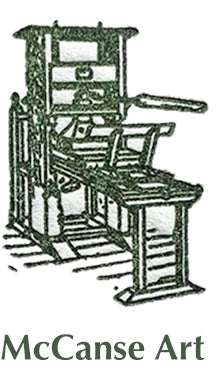Florence Wyle
Florence Wyle (1881-1968), RCA. Florence Wyle was born in Trenton, Illinois into a strict and traditional family. As a child, she enjoyed sports and excelled in school. Against her family’s wishes, she enrolled in a pre-medical course at The University of Illinois in 1900 and learned anatomical drawing and medical sculpture. After 3 years of study, Wyle transferred to the Art Institute of Chicago to pursue a career in art.
At the Art Institute, Wyle studied under Charles Mulligan and Lorado Taft. It was in Taft’s modeling class that Wyle met Frances Loring, who would become her life partner and collaborator. In 1910, Wyle joined Loring in New York City, where the two lived in a converted stable in Greenwich, a neighborhood buzzing with fellow artists. While living there, Loring and Wyle began to collaboratively design commercial products, such as tabletops and candlesticks. In New York, Wyle exhibited her plaster sculpture Dancing Boy at the Winter Exhibition of the National Academy of Design. In 1913, Wyle and Loring moved to Toronto, where they would launch a distinguished and influential career in sculpting.

At the time of Wyle and Loring’s arrival to Canada, sculpture was considered an apprentice medium and held little interest in the art world, which was dominated by men. Nonetheless, Wyle quickly integrated herself into Toronto’s art community, exhibiting at the Ontario Society of Art alongside Loring and exhibiting two pieces independently at the Royal Canadian Academy of Arts in 1914.
By 1915, sculpture was gaining critical attention; that year, the Art Museum of Toronto held an exhibition dedicated solely to sculpture. Wyle and Loring, who were affectionately dubbed “the Girls,” exhibited more pieces than all other sculptors combined. The exhibit was a success, and their work was met with high praise.
With the onset of the first World War, Wyle and Loring’s careers accelerated. At the request of Eric Brown, who was responsible for organizing the War Memorial Fund for Canadian artists, Wyle and Loring were commissioned to produce a series of sculptures documenting the war efforts of women in Canada. Together, Wyle and Loring produced seven bronze-cast sculptures for this project, exhibiting their works at the Art Gallery of Toronto in 1919. Wyle’s works were intricate and realistic, paying particular attention to the details of faces and figures. In a letter Eric Brown wrote to Wyle, he notes that renown Group of Seven artist A.Y. Jackson had responded to the series by saying that he “wish[ed] to knock down all the statues in Toronto and let you [Wyle and Loring] replace them with anything you wish.”
The period following the War represented the height of Wyle’s career. The pair had moved to a new studio, which had been converted from a church, and they began to work on more ambitious projects. In 1920, Wyle was elected to be a member of the Royal Canadian Academy of Arts. In 1922, she was elected to be a member of the Ontario Society of Artists. Together, Wyle and Loring worked on war monuments and portraits for several years.
In the 1940s, Wyle began a series of wood carvings entitled Rivers of America. These works depicted torsos in fine detail, with figures appearing to protrude from the base of the sculptures. By this point in their careers, Wyle and Loring had garnered significant critical attention, both as individual artists and collaborators, and Wyle herself was awarded many accolades; in 1953, Wyle received the Coronation Medal.
While Loring preferred to work large-scale, creating more visually dramatic pieces, Wyle’s sculptures were defined by thorough and precise detail that reflected a more intimate quality in her subjects, possibly a result of her early love of anatomical drawing. A prevalent theme in Wyle’s work was the role of women in the War and in Canada; her work became increasingly focused on representing feminine figures and exploring female power. While she adapted her works to the different artistic movements that emerged over time, she was a firm believer in traditional, detailed sculpting, and this aspect of her work stayed constant throughout her career.
Wyle passed away in 1968 while she was still residing with Loring. Their wills requested that their assets be donated to a foundation funding the next generation of Canadian sculptors.
Written by Maddy Chinneck.
Sources:
Boyanoski. “Loring and Wyle: Sculptor’s Legacy.” Art Gallery of Ontario. Print.
“Frances Loring – Florence Wyle.” Pollock Gallery. Toronto. Print.
Pokorn, Daniel. “The Sculptor’s Society of Canada — 60 Years Old and Going Strong.” Espace Sculpture, volume 4, number 4, summer 1988, p. 28–29. Print.
